Hamilton's 1st Tiny Homes Show draws people looking for affordable, minimalist living
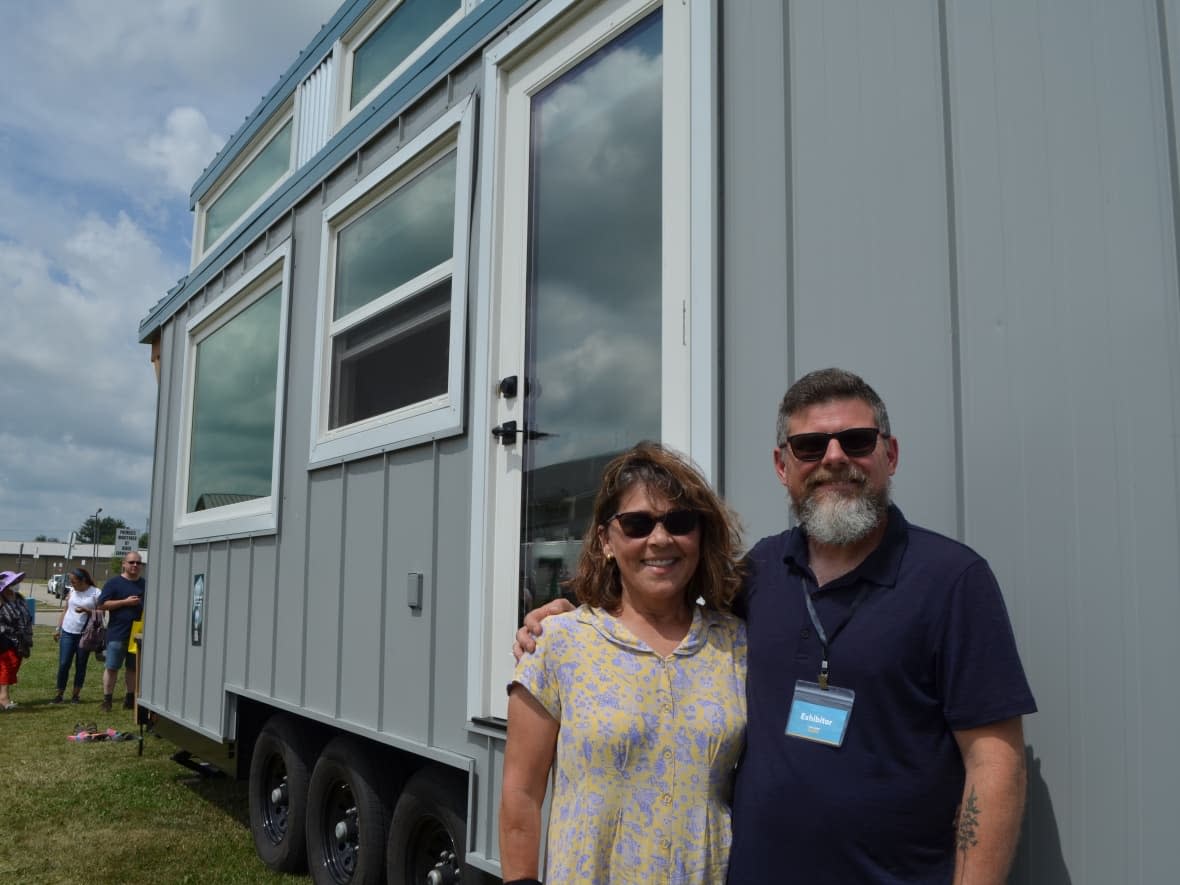
Two weeks after buying a new home in Alberta, Vince and Ayşe Macdonald found themselves in Ancaster, Ont. — and they brought their tiny home with them.
The married couple said moving into a tiny home helped them get rid of the things they didn't need.
"I don't wear half of my clothes, I don't use half of the dishes. It just made sense," Ayşe said.
"We're not serving our stuff; our stuff is serving us," Vince said.
Their residence was one of 19 tiny homes and trailers available for visitors to view from Aug. 4 to Aug. 7 at the Tiny Home Show on the Ancaster Fairgrounds.
The event attracted over 2,000 visitors, according to the organizers, and had over 20 speakers presenting on topics including climate and integrating into a tiny home.
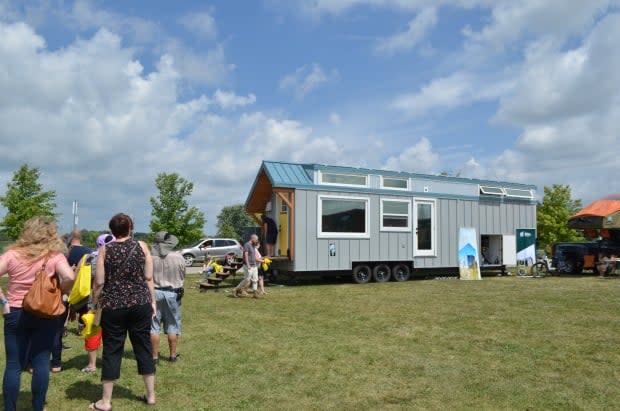
People of all ages visited the show throughout the weekend, some looking for retirement homes, others to buy their first house. Among the exhibitors were some of the many builders of tiny homes across Canada.
Maria Sturova, the show's co-producer, said the event's turnout is a sign people need better housing options.
"There's a housing crisis and a climate crisis. There's not a single person who is not touched by this. And so these people here are trying to find solutions."
Even as rents continue to climb and housing sales are slowing, costs are still higher than they were pre-pandemic.
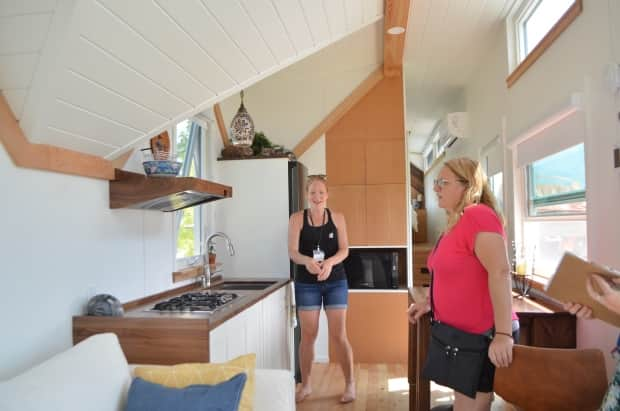
According to a Rentals.ca report, the average monthly rent for a one-bedroom unit in Hamilton is $1,603, up roughly $100 from rates in February.
A report from the Realtors Association of Hamilton and Burlington showed fewer listings and a slight drop in the value of homes, though the average price to buy a residential property in the Hamilton-Burlington area is $946,026. That compares to $658,654 in March 2020.
The City of Hamilton has passed bylaws to allow secondary units — like basement apartments or laneway houses — and is aiming to regulate short-term rentals like Airbnbs to protect the housing market.
Young couple thinks about affordability, travel
According to the Macdonald family, their minimalist lifestyle is freeing, but Ayşe noted "it's different for everyone."
"You don't have to be totally minimalist where it's bare ... I do have a few ornaments, I paint rocks, and they're there."
Ayşe said she hopes her lifestyle inspires younger people who want to pursue their dreams but don't have the money or desire to own a big home.
Stephen and Renee Benjamin, a young couple from Tottenham, Ont., said they were drawn to the idea of tiny homes because of their price and the potential to travel with them.
"It's an easier path to being debt free and not having to always work," Stephen said.
"The prices of houses are pretty crazy in Canada, for young couples and young people in general, so we're just thinking about this as an option, or maybe even like an investment."
Renee added: "Something like this would be a great option for us if we're able to be in an area where we can be in the outdoors as much as possible."
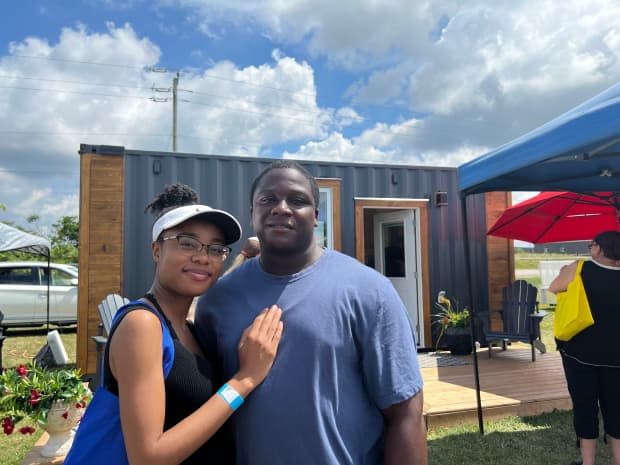
Sturova said the average cost of a new tiny home is roughly $150,000, but that doesn't include the cost of land.
A typical tiny home is usually between around 200 to 400 square feet. The cost of land per acre across Canada ranges from $1,656 in Saskatchewan to $13,813 in Ontario, according to 2021 data from Statistics Canada.
Sturova said some people are using tiny homes as rental properties they can list on Airbnb.
However, groups such as the Hamilton Encampment Support Network have said tiny homes aren't a solution to the housing crisis.
The Hamilton Alliance for Tiny Shelters (HATS) was building what it called "tiny cabins" to help people experiencing homelessness.
Still, HATS said, these cabins shouldn't be permanent, and tiny homes should be only an option to help supplement people who can't afford other housing.
"We need housing. We need supportive housing that's accessible and safe," said HATS director Tom Cooper.
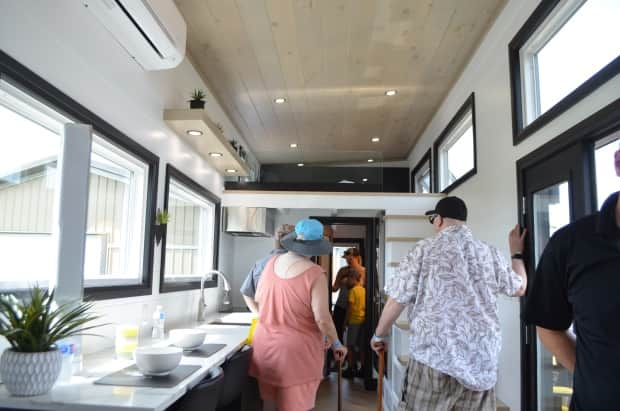
Sturova said the Ancaster Tiny Homes Show was a place to share ideas on how to live more sustainably.
For instance, she said, tiny homes can be coupled with environmentally conscious products like wind turbines or composting toilets.
"A tiny home uses less of everything. Because it's not just the energy, it's the building materials, it's the clothes and shoes and plates and everything that you have in your house."
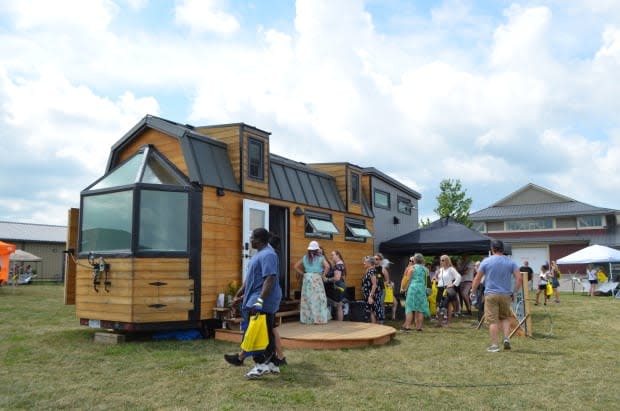
Sturova said tiny homes don't come without challenges, especially when it comes to finding land for them.
"We are talking to the government and decision-makers who are doing land planning and land development. We've had several mayors here; we've had several chief building officers.
"There need to be more conversations and more kind of open dialogue, and the show itself that we organized here, in order to make a change."


